Seeing a “service electronic stability control” warning light come on can be concerning. But not to worry, there are several ways to diagnose and fix stability control problems yourself or with professional help.
This comprehensive guide will examine what electronic stability control is, reasons the system light may turn on, how to diagnose faults, and steps to reset and fix issues ranging from sensor problems to complete ESC module replacement.
With the right knowledge, you’ll be able to restore proper stability control function and get the pesky warning light turned off.
What is Electronic Stability Control and What Does it Do?
Electronic Stability Control (ESC) is an active safety system on modern vehicles that helps prevent loss of control and rollover accidents. Here is how it works:
– Monitors steering and braking inputs from the driver and compares them to the vehicle’s actual movement using wheel speed sensors and lateral acceleration sensors.
– When sensors detect a mismatch between driver inputs and vehicle movement, the ESC computer tells the brakes to selectively apply pressure to individual wheels.
– Braking specific wheels counteracts oversteer or understeer when cornering, keeping the car stable and on the intended path.
– Systems like traction control, anti-lock brakes, and yaw control are typically bundled into overall ESC functionality.
– Can also reduce engine power in concert with braking to slow the vehicle and mitigate instability in emergency maneuvers.
Key benefits provided by electronic stability control:
– Prevents fishtailing, spinouts, and rollovers
– Assists in emergency obstacle avoidance and direction changes
– Keeps car stable in poor weather driving conditions
– Especially useful for inexperienced drivers in panic situations
– Generally makes the vehicle safer and easier to control
ESC has been mandatory on all new cars in the US since 2012. When this important system starts showing a warning light, it’s imperative to diagnose and fix the problem promptly.
Common Causes of Electronic Stability Control Light Coming On
There are a variety of issues that can trigger the ESC system warning light. Here are some of the most common causes:
– Wheel speed sensor failure – Damaged wires or faulty sensors prevent proper speed data input to ESC module. Causes the system to turn off.
– Lateral acceleration sensor failure – This key sensor reports vehicle sideways movement. Fault causes ESC light.
– Steering angle sensor malfunction – Measures steering input direction. Defects disable stability control.
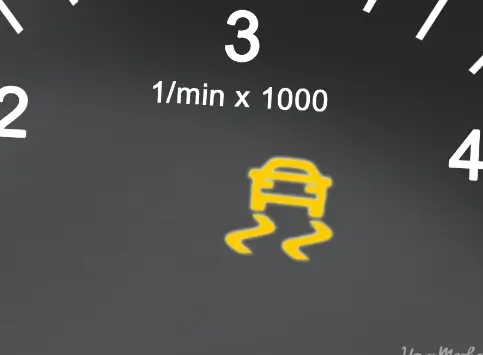
– Low brake fluid – Brakes can’t operate properly which renders ESC unable to function since it uses braking control.
– ESC hydraulic or electrical faults – Internal ESC module issues can cause malfunctions. Requires module replacement.
– Loose wheel speed sensor – If a wheel sensor comes loose, connectivity issues turn on the warning light.
– Aftermarket modifications – Larger wheels, lift kits, and other mods can confuse ESC sensors and trigger codes.
– Bad wheel bearing – Excessive wheel bearing play sends incorrect data to the ESC module.
– Recent collision repair – Damage or improper wheel alignment after a collision can activate stability control faults.
– Wet conditions – Brief ESC light during very wet weather is normal as sensors detect slipping. Should turn off after drying.
How to Diagnose Electronic Stability Control Problems
Pinpointing the cause of ESC system warning lights takes some diagnostic work:
– Scan for trouble codes – Retrieve any ESC-related fault codes stored in the system that indicate sensor failures or specific issues.
– Visually inspect sensors – Check for damaged connectors, frayed wires, or loose sensors like the steering angle sensor.
– Check wheel speed sensors – Unplug each sensor and check for dirt/damage. Verify ohm readings match specs.
– Test operation – Drive the vehicle and deliberately cause wheel slippage, such as on wet pavement. The ESC should intervene. Failure indicates issues.
– Monitor other systems – Make sure components like steering, tires, wheel bearings are in good order. Faults may affect ESC.
– Test brake fluid – Inspect level and condition. Change if old, low or contaminated fluid is present.
– Check hydraulic ESC parts – Valves, pumps, and brake lines that are part of stability control should be inspected.
– Review service history – Recent collision repairs or modifications may have impacted the ESC.
– Swap modules – Try exchanging ESC control units between the left and right vehicle sides to check if the problem follows the module.
Thorough troubleshooting helps isolate whether the issue is with sensors, hydraulic components, electronic control modules, or other parts of this critical integrated safety system.
How to Reset Electronic Stability Control System
If you’ve fixed the underlying problem that caused stability control faults, you’ll then need to do an ESC system reset to clear any trouble codes and turn off the warning light. Here is the reset procedure:
1. Address original issues – Make necessary sensor replacements, inspect connectors, check brake fluid, etc. before attempting a reset.
2. Turn ignition on – Insert key and turn to the On/Run position without starting the engine.
3. Press gas pedal – Fully press and release the gas pedal 3 times within 5 seconds.
4. Turn ignition off – Rotate the key back to the Off position after pedal cycling.
5. Wait 15 minutes – Allow ESC systems to fully reset. Keep doors closed and don’t press the brakes.
6. Start engine – Turn key to On and start engine. The ESC light may stay on temporarily.
7. Test drive – Drive a short distance ensuring light turns off after a successful reset.
8. Scan for codes – Use a diagnostic scanner to verify no more ESC trouble codes are present.
9. Recheck system – Make sure ESC engages properly when wheels slip during acceleration.
The step-by-step reset procedure lets you clear the ESC system and test for proper operation after making repairs. If faults return, further diagnosis of original issues is required.
How to Replace Wheel Speed Sensor to Fix ESC
A very common cause of stability control problems is a faulty wheel speed sensor. Here is how to replace a faulty wheel speed sensor:
Supplies Needed:
– Replacement wheel speed sensor matched to vehicle
– Basic hand tools – wrenches, sockets, pry bar, torx drivers
– Electrical tape and wire crimp connectors
Steps:
1. Locate sensor – Follow wiring from hub/bearing assembly up to sensor mounted in wheel well or frame rail.
2. Disconnect electrical connector – Separate the wiring harness connector from sensor.
3. Remove mounting bolt – Remove mounting bolt securing sensor to vehicle. Caution: be careful not to damage the sensor.
4. Unclip sensor – Pry/wiggle sensor to detach it from vehicle. Note position and alignment.
5. Remove sensor – Gently pull sensor and attached wiring out from vehicle. Protect connector end.
6. Install new sensor – Align and insert replacement sensor into original position. Attach mounting bolt.
7. Connect wiring – Plug in electrical connector and join any severed wires with crimp connectors.
8. Clear codes – After install, start the vehicle and use a scanner tool to clear any ESC fault codes.
9. Test drive – Normal ESC operation should be restored. Cruise on wet pavement and make turns to verify.
With the new OEM or equivalent aftermarket wheel speed sensor installed, the stability control system can get back to functioning properly and keeping your vehicle safe.
How Much Does it Cost to Repair Electronic Stability Control?
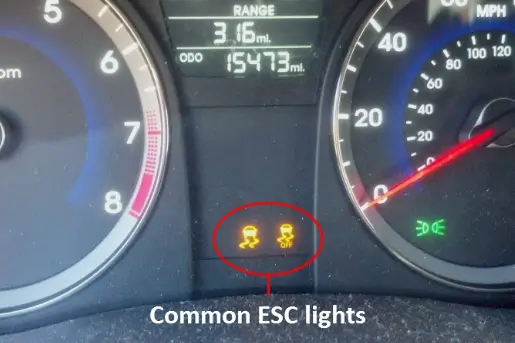
Repair costs to fix stability control issues span a wide range depending on the specific problem. Here are typical repair estimates:
– Wheel speed sensor replacement – Parts $50-150. Labor 1-2 hours for a total of $150-350. One of the more affordable fixes.
– Steering angle sensor replacement – Sensor $125-250. Labor 2+ hours, so around $350-550 total. More intricate install.
– ESC module replacement – Parts can be $600-1,000 just for the ESC control unit. With 3+ hours labor figure $900-1500 total. Big expense.
– Hydraulic component repairs – Expect $450+ to replace defective ESC pumps, valves, actuators or brake lines if those internal parts fail.
– Brake fluid flush – about $150 including new fluid and bleeding if contaminated fluid caused issues.
– Wire harness repair – $200+ for diagnosis and repair of damaged ESC wiring and connectors.
– Collision shop ESC repairs – Estimates from collision centers start around $1000 if crash damage caused faults.
– Dealer diagnosis/repair – $150+ hourly rates at dealerships make even basic ESC repairs cost $500+.
The range is wide from simple sensor replacements under $200 to extensive hydraulic repairs or control module replacements exceeding $1000. Research repair costs for your specific vehicle before visiting a shop.
Electronic Stability Control Light Stays On After Replacement
After replacing a failed stability control component and resetting the system, the ESC warning light staying on usually indicates:
– Faulty new part – The new sensor or module you installed may be defective right out of the box. Try an alternate new component.
– Incorrect replacement part – Using an incompatible or wrong sensor or module for your vehicle won’t fix the issue. Double check part numbers match.
– Poor sensor connection – If a sensor replacement didn’t fully lock into place, connectivity issues cause trouble codes.
– Unrelated issue – A separate problem you haven’t diagnosed yet could be triggering the light. Further inspection needed.
– Low brake fluid – Any brake fluid loss after replacement repairs can activate the ESC light again. Top off fluid.
– Bad wheel bearing – Excess play triggers incorrect data. Inspect bearings even if not originally diagnosed.
– Software calibration – Replacement modules require a special recalibration procedure through a dealer scan tool after install.
– Electrical short – Check new sensors and wires for damage that could cause a short setting off the light.
– Corrosion – On older vehicles, severe corrosion around sensor mount points can prevent proper function.
– Collision damage – If a car was in a crash, repairs may not have restored proper sensor positions or wheel alignment.
Don’t assume a new part fixed the problem – further electrical and mechanical diagnoses of ESC system components is required if the light persists.
Electronic Stability Control Light Comes On Sometimes: Causes
If the stability control warning flashes intermittently, here are some likely causes:
– Bad sensor connections – Corrosion or loose plugs can cause temporary connectivity losses to wheel and lateral movement sensors.
– Low battery – Weak battery or alternator allows voltage to drop occasionally, disrupting ESC modules.
– Wet conditions – Momentary light activation in rainy/snowy weather is normal as tires spin. Should go off shortly.
– Tire pressure – Under- or over-inflated tires confuse ESC sensors with slightly incorrect wheel speeds.
– Uneven tires – Mismatched replacement tires with different sizes or tread depths trick sensors.
– Alignment issues – Improper alignment causes torque steer and veering that ESC tries to correct.
– Off-roading – Aggressive driving on rough terrain can strain and confuse ESC sensors.
– Towing or overloaded – Heavy trailer or passenger load activates ESC as it compensates for load.
– Aftermarket mods – Larger wheels, lift kits, and some performance mods intermittently trigger the system.
– Intermittent electrical fault – Bad grounds, shoddy wire repairs, and other wiring gremlins plague ESC.
It’s not uncommon for the stability control to briefly react to certain conditions that strain the system. But consistent intermittent faults point to underlying issues needing repair.
Is it Safe to Drive With Electronic Stability Control Light On?
Driving with the ESC or traction control warning lights illuminated steadily is not recommended. Here are the risks:
– Spinouts – Loss of stability control greatly increases chances of spinouts, especially in wet conditions.
– Rollovers – SUVs and trucks are at higher risk of rollovers without ESC able to detect and mitigate tipping.
– Crashes – Loss of control collisions become more likely without ESC to counter dangerous over/understeer.
– Injury – Vehicle occupants are more prone to injury without ESC able to stabilize the vehicle in emergencies.
– Poor handling – Vehicle will handle loosely around corners and be more difficult to control without stability assist.
– Tire wear – ESC corrects slipping wheels which helps prevent uneven tire wear when engaged. Driving without it risks wear.
– Further damage – Underlying issues that caused ESC problems may worsen with prolonged driving.
However, you can still safely drive a short distance to a repair shop if absolutely necessary:
– Drive cautiously – No aggressive maneuvers or high speeds. Avoid wet/slippery roads.
– Test brakes – Ensure regular brakes are fully functional before driving without stability braking assist.
– Choose dry conditions – Dry weather and good visibility minimize risk without ESC.
The best advice is to fix ESC right away. The safety benefits are too great to disable this vital driving aid permanently.
Electronic Stability Control Recall: Affected Models
Major vehicle manufacturers have issued safety recalls over the years related to defective electronic stability control components. Here are some of the models affected:
Ford Recall 18V332000 – Steering gear motor sensor defects in Ford Escapes, Fusions, Edges and other models could disable ESC. About 1.3 million vehicles were recalled.
GM Recall 14V594000 – Corrosion caused connectivity problems in the ESC module on Chevy Silverado, Tahoe, Suburban and GMC Sierra. Over 100,000 trucks recalled.
Toyota Recall 18V684000 – Bad circuit boards inside the ESC unit caused warning lights on 2018-2019 Toyota Tundras. 226,000 trucks recalled.
Chrysler Recall 18V634000 – Program errors in the ESC module computer affected Alfa Romeo Giulia, Stelvio and Chrysler Pacifica vehicles. 13,000 recalled.
Hyundai Recall 19V014000 – Malfunctioning yaw rate sensors triggered stability control faults in Hyundai Elantras. Around 40,000 compact cars were recalled.
Kia Recall 17V224000 – ESC wiring connector issues caused warning lights on Kia Sportage SUVs. 72,000 recalled.
Volkswagen Recall 69R6 – Faulty steering angle sensors on Passats and CC sedans could disable ESC. About 50,000 cars.
These and other manufacturer-issued recalls allow consumers to get instability control components repaired on affected vehicles free of charge if defects are discovered.
How Often Does Electronic Stability Control Need Servicing?
Since electronic stability control is a fully integrated system that constantly monitors itself, no periodic servicing is required to keep it working properly. However:
– Get ESC inspected anytime a warning light comes on – Don’t ignore dashboard alerts indicating malfunction.
– Check ESC operation if you feel it is engaged – System should activate seamlessly. Any clunks, delays or ongoing traction loss indicate possible faults.
– Monitor tire condition and pressure – Uneven tire wear patterns or pressure issues can confuse ESC sensors.
– Inspect wheel speed sensors when servicing brakes and bearings – Technicians should check sensor condition during normal brake and hub service.
– Replace aging steering angle sensor – Factory recommends replacement around 100,000 miles as sensor accuracy slowly decays.
– Flush old brake fluid – Moisture-contaminated fluid boils at lower temps which affects braking and ESC. Change every 2-3 years.
– Check brake pads and rotors – Excessively worn pads reduce braking ability which interferes with stability control.
– Periodically erase fault codes – After any major repairs that required ESC system resets. Clears memory to check for new issues.
The ESC itself doesn’t require scheduled upkeep besides addressing problems as they arise. But monitor interconnected systems like tires, brakes and sensors that allow it to work properly.
Electronic Stability Control FAQ
Here are answers to some frequently asked questions about electronic stability control:
Is it bad to turn ESC off?
Yes, disabling stability control permanently is unsafe and not recommended, as you lose a key accident avoidance technology. Turn off only briefly in certain situations like stuck in snow or mud.
Which vehicles do not have ESC?
Most vehicles 2008 and newer have electronic stability control as mandated for US cars. Minivans, pickups and SUVs had an extra 3 year phase-in period – standard by 2011.
Why does my ESC light come on sometimes while cornering hard?
Momentary activation of ESC and the warning light while cornering aggressively is normal. System is engaging to prevent loss of traction.
Can I still break normally if ESC fails?
Yes, your base brakes remain fully functional. Stability control augments braking in emergency situations but is not required for baseline braking performance.
Should I replace or repair ESC immediately when the light comes on?
Yes, it’s recommended to address ESC system issues right away rather than continuing to drive without this important safety feature.
When should I reset my electronic stability control?
After making any ESC repairs or component replacements. Resets clear warning lights and trouble codes. Also can help revive flaky ESC function.
Conclusion
Electronic stability control has proven itself as one of the most significant automotive safety innovations in modern times. When this system starts showing its telltale warning light, getting it properly repaired should be a top priority.
Thorough troubleshooting and analysis of fault codes will reveal whether the issue lies with sensors, hydraulic components, electrical connectors or the ESC module itself. In most cases, ESC problems can be fixed with affordable sensor replacements, fuse and relay checks, or wire harness repairs. But major module or hydraulic failures may necessitate costlier repairs.
Resetting procedures after fixes clear all warning lights and fault memories. Drivers should notice ESC working normally again during wet or slippery driving conditions. Don’t ignore dashboard alerts that indicate stability control faults, and move promptly to restore your vehicle’s ESC functionality.
Driving safely is too important to disable such a valuable accident avoidance technology permanently.

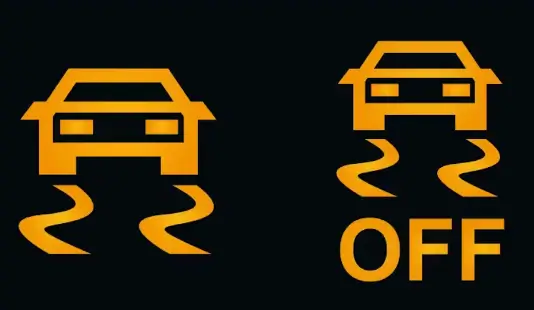
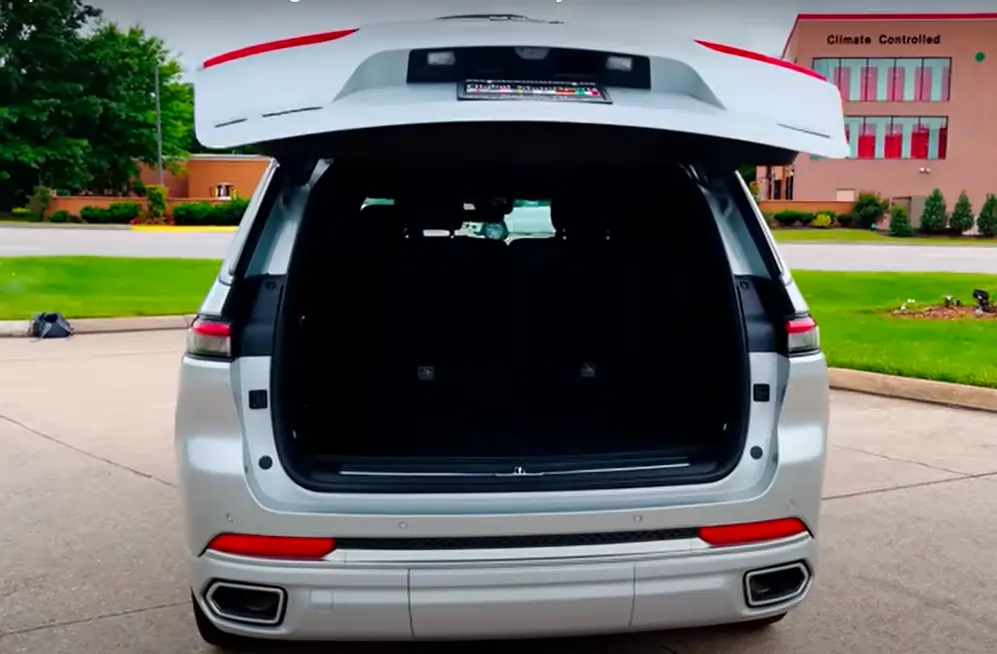





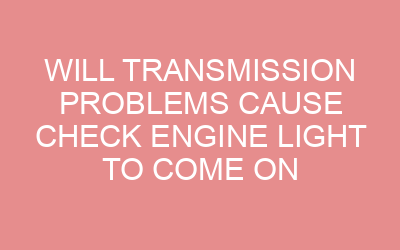





Leave a Reply